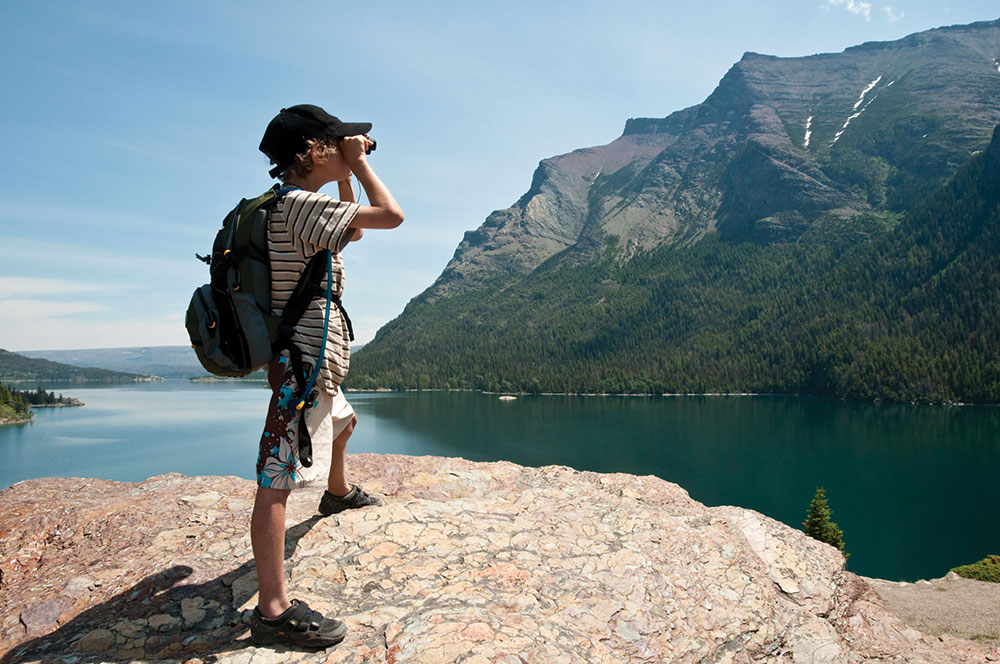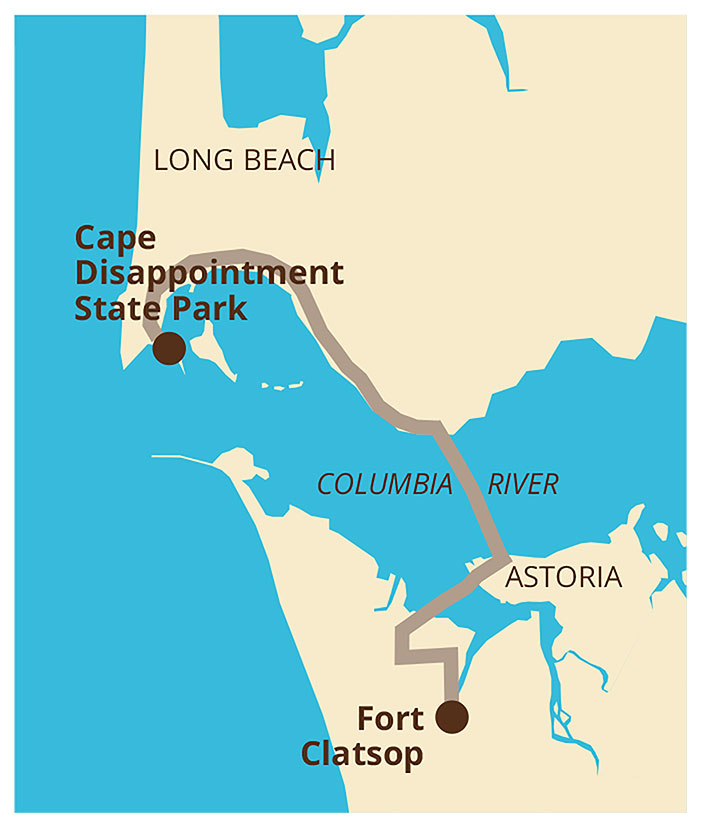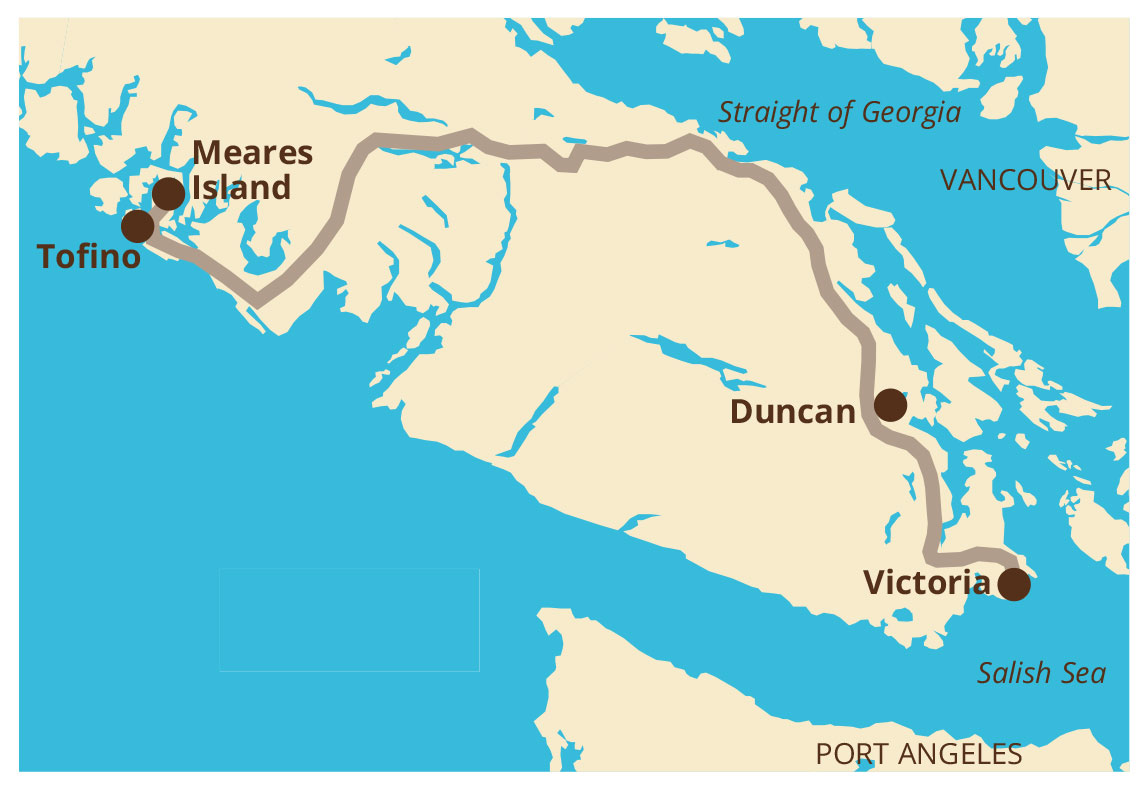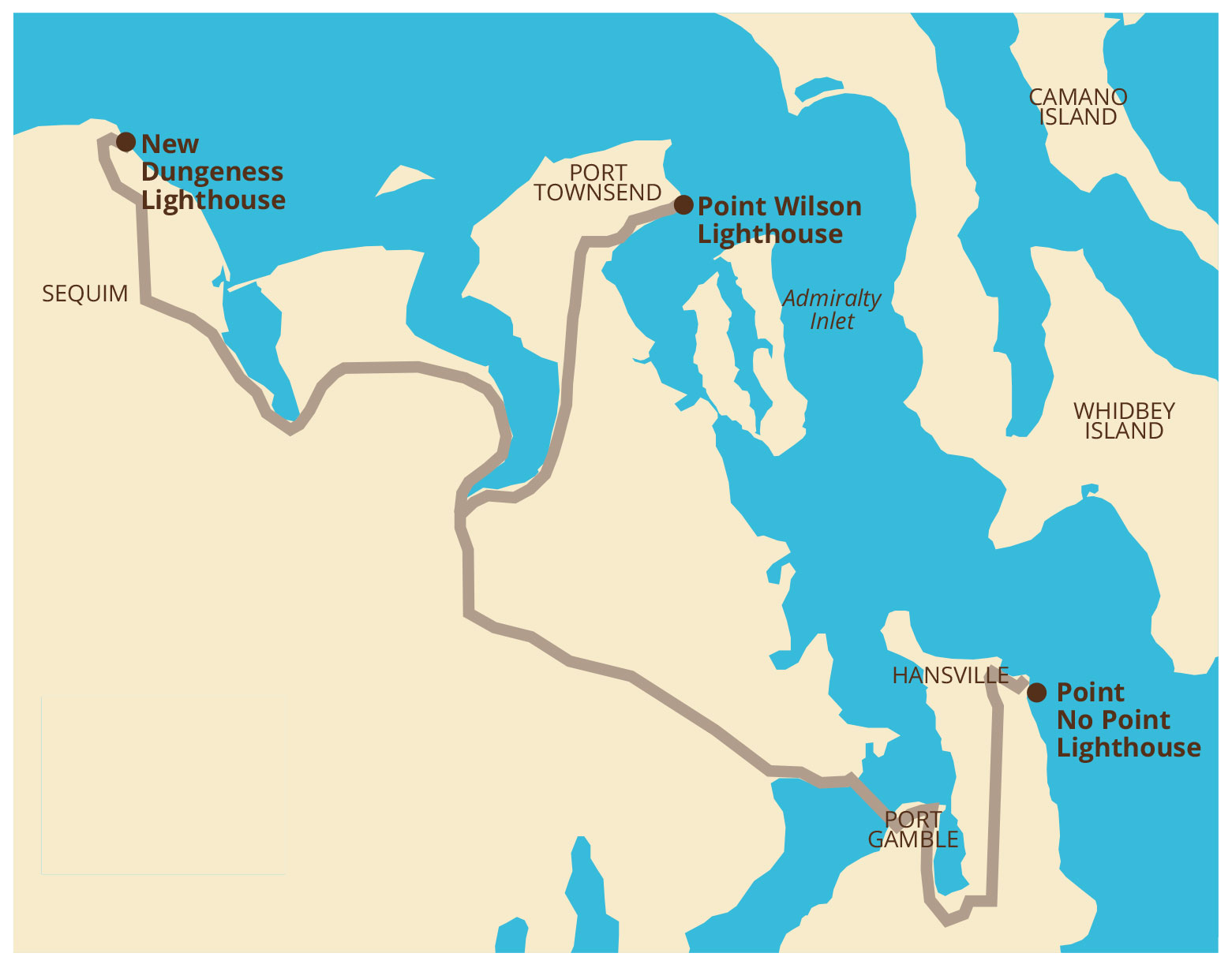
Most children learn about the events that have shaped our world, from the Civil War to civil rights, in a classroom or from a thick textbook. As a visual learner, I struggled to grasp the significance of these stories from another time and place. But travel changed that, and soon after college I unlocked my own love of history on a quest to visit the ruins of all the major Mayan cities.
The Pacific Northwest isn’t known for ancient relics or storied battlefields, but history is all around us. Here are three summer adventure vacations that make the past come alive.
1. On the trail of Lewis and Clark

Don your felt cap and buckskin moccasins to follow in the westernmost steps of Capt. Meriwether Lewis and 2nd Lt. William Clark when they traversed uncharted territory, foraged for food and camped through a harsh coastal winter. Tracing the Corps of Discovery expedition leads history buffs along the mouth of the Columbia River and the Pacific Coast from Long Beach, Wash., to Fort Clatsop, Ore.
Stay
Make your home base in Long Beach or Astoria, both a short drive from all the historical stops. Book kid-friendly digs for a great price at Adrift Hotel and Spa in Long Beach, where an onsite restaurant, a path to the beach and free cruiser bikes are welcome perks. In Astoria, splurge for a sweeping view of the Columbia River from the Cannery Pier Hotel. Borrow colorful bikes for a ride on the boardwalk and fill up on the free continental breakfast.
Visit
Lewis and Clark Interpretive Center:
When the explorers reached the mouth of the Columbia River, they stopped along the north bank at sites known as Dismal Nitch and Station Camp (now little more than highway pullouts with interpretive signage). The expedition then split up to explore the headlands around Cape Disappointment before spending the winter at Fort Clatsop. An essential stop, the Lewis and Clark Interpretive Center in Cape Disappointment State Park tells the story of their journey. The interactive exhibits were designed with kids in mind: Pack a canoe without tipping it, follow a treasure hunt and learn what members of the expedition ate during the stormy winter.
The park is also home to two historic lighthouses that guide mariners into the Columbia River, helping to avert history from repeating itself — frequent shipwrecks once earned this infamous stretch of coast the nickname “graveyard of the Pacific.” A Washington State Discover Pass is required for your car.
Southwest of downtown Astoria sits Fort Clatsop, where the Corps of Discovery camped from December 1805 to March 1806. The visitors’ center includes a replica of the fort and offers programs led by costumed rangers, and the site also has an interpretive center. To see more, set out on the Fort to Sea Trail as it winds through the woods to Sunset Beach on the Pacific Ocean (six and a half miles). Fort Clatsop is part of Lewis and Clark National Historic Park.
2. Salish traditions tour
 Pacific Northwest history began long before European explorers arrived by ship. Our region is full of indigenous cultures, and a wonderful way to experience them is on a family trip to Vancouver Island. Stay in Tofino, where the Nuu-chah-nulth First Nations have made Clayoquot Sound their home for several thousand years. Take a guided trip in a traditional Nuu-chah-nulth dugout canoe to Meares Island, where the Tla-o-qui-aht village of Opitsaht has been inhabited continuously for at least 5,000 years. On the way back, stop for a tour of totem poles in Duncan, then learn about Salish art and culture at the Royal BC Museum in Victoria.
Pacific Northwest history began long before European explorers arrived by ship. Our region is full of indigenous cultures, and a wonderful way to experience them is on a family trip to Vancouver Island. Stay in Tofino, where the Nuu-chah-nulth First Nations have made Clayoquot Sound their home for several thousand years. Take a guided trip in a traditional Nuu-chah-nulth dugout canoe to Meares Island, where the Tla-o-qui-aht village of Opitsaht has been inhabited continuously for at least 5,000 years. On the way back, stop for a tour of totem poles in Duncan, then learn about Salish art and culture at the Royal BC Museum in Victoria.
Stay
It’s hard to go wrong here: Tofino’s coast is lined with family-friendly resorts. Long Beach Lodge Resort sprawls on a stretch of beach and offers affordable rates (look for special deals), with amenities such as continental breakfast and a communal great room for evening board games and surf watching. If your budget allows, book a stay at the luxurious Wickaninnish Inn on Chesterman Beach, where children are given a WickKids basket with fun trinkets and activities. Parents will love the complimentary child care when dining at The Pointe Restaurant.
Visit
Guided Canoe Adventure:

Book a four-hour canoe and hiking trip through T’ashii Paddle School, a First Nations–owned outfitter that guides phenomenal tours from Tofino to Meares Island. Your boat is a 1,000-year-old red cedar log transformed into a dugout canoe. Keep an eye out for brightly hued starfish and bald eagles — but don’t forget to listen! The guide will keep you well informed about First Nations culture and the nature you pass along the way. Note: suitable for older children who can paddle.
Totem Tour:
Duncan, a former logging town, has earned the nickname “City of Totems” — and you’ll see why. More than 50 carved, painted totem poles stand around town: Follow the yellow footprints on the sidewalk for a self-guided walking tour. Swing by the Quw’utsun’ Cultural and Conference Centre to learn about the Cowichan people; the onsite Riverwalk Café serves up contemporary native cuisine.
Kids love this place, and you will, too. One of the Northwest’s best museums, it offers three stories of easy-to-digest history and high interactivity — life-size dioramas, displays of artifacts and IMAX films. Don’t miss the stunning First Peoples Gallery.
3. Coastal lighthouse and maritime history tour
 Before lighthouses, there were shipwrecks. Lots of ’em. When shrouded in fog, which they often were, our rugged capes and headlands were a thorn in the side of mariners.
Before lighthouses, there were shipwrecks. Lots of ’em. When shrouded in fog, which they often were, our rugged capes and headlands were a thorn in the side of mariners.
Washington’s coastline hosts 20 active lighthouses, constructed with bravery and ingenuity in the late 1800s in fierce, stormy conditions. For nearly a century, they were manned by lighthouse keepers who replenished fuel and trimmed the wicks, among other tasks. They lived onsite with their families, often completely isolated for months on end. The lighthouses are automated now, but their story still resonates.
Stay
Settle into a cute one-bedroom suite at Port Townsend’s Bishop Victorian Hotel, where thoughtful touches transport you back to the era when Port Townsend was expected to become the West Coast’s maritime hub. The kitchenette makes prepping snacks a snap; little ones will enjoy the cable TV and DVD player, and you’ll appreciate the Wi-Fi.
Got a whole week? Your family can be real lighthouse keepers! Near Sequim, the New Dungeness Lighthouse is staffed year-round by volunteers who tend the grounds, greet visitors and give tours. The cushy keeper’s quarters are a large house with three bedrooms. To volunteer, first become a member of the New Dungeness Lighthouse Association, then select from available weeks. .
Rent quarters steeped in history — but without the keeper’s responsibilities — at Point No Point Lighthouse, near Hansville. Your accommodations include one side of the keeper’s duplex, which has two bedrooms and a full kitchen, plus a breathtaking view of the sound. The other side of the duplex houses a small museum.
Visit
Set on Port Townsend’s bustling waterfront, the Maritime Center is home to the Wooden Boat Foundation (host of the Wooden Boat Festival in September) and a Chandlery gift shop (daily, 10 a.m.–5 p.m.) packed with mariner gadgets, maps and books.
Located in Fort Worden State Park, this 1913 tower sits on a point named by Capt. George Vancouver to honor a friend, marking the entrance into Puget Sound. Free tours are offered regularly. (Washington State Discover Pass required to enter the park).
You don’t have to stay here to take a tour! Point No Point was built in 1879 and sits low at 30 feet. Free tours are given on weekends, April–September, from noon until dusk. Kids will love combing the sandy beach for treasures from the sea.
The past, fast
Get a jolt of history on one of these quick adventure trips.
 • Ballard Locks (Seattle): Next time the locks draw your wide-eyed children to see jumping fish, stop by the visitors’ center and find out why this marvel of engineering, formally known as the Hiram M. Chittenden Locks, is on the National Register of Historic Places.
• Ballard Locks (Seattle): Next time the locks draw your wide-eyed children to see jumping fish, stop by the visitors’ center and find out why this marvel of engineering, formally known as the Hiram M. Chittenden Locks, is on the National Register of Historic Places.
• Klondike Gold Rush National Park (Seattle): The gold was in the Yukon, but thousands of hopeful prospectors got there in 1897 by way of Seattle. This free museum in the heart of Pioneer Square tells the story.
• Columbia River Maritime Museum (Astoria): If your kids love big ships, go here! The museum is fun, educational and totally engaging. Tack on a stop at nearby Fort Stevens State Park for an up-close inspection of a real shipwreck, accessible at low tide.
• Coal Creek History Hike (Bellevue): Coal was discovered here in the 1860s, and although the miners are long gone, the ruins of their town site remain. Hike past a crumbling hotel and an abandoned mine shaft, crossing several rustic bridges.
• Roslyn Museum (Roslyn): Once upon a coal mine, this town was booming. Next time you visit Suncadia, detour through Roslyn to see artifacts from the glory days when coal from these mines powered steam engines that crossed the Cascades. Mine tours available.
• National Historic Oregon Trail Interpretive Center (Baker City): Visit the landscape that drew immigrant families in Conestoga wagons. See living history demonstrations, interactive exhibits and more than four miles of interpretive trails.












